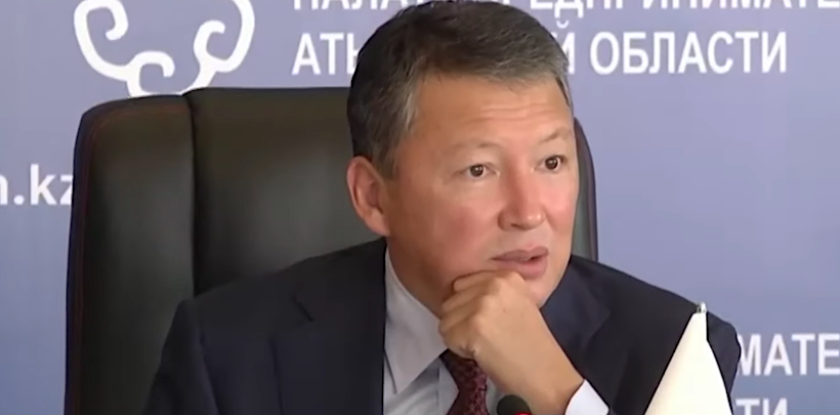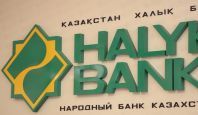On December 3, 2019, Fitch Ratings upgraded the Long-Term Issuer Default Ratings (IDRs) of JSC Halyk Bank (Halyk) and its subsidiary, Halyk Finance (HF) to 'BB+' from 'BB'. The Outlooks are Positive. With that, the agency remarks that Halyk’s ‘B’ SRF is one notch higher than that of ATFBank and ForteBank which reflects «Halyk’s higher systemic importance, as expressed by its significant market shares».
Thus, it has been confirmed once again that Halyk Bank that belongs to the richest family in the country — the daughter and son-in-law of Nursultan Nazarbayev, Dinara and Timur Kulibayevs — is the biggest, most stable and trouble-free bank in Kazakhstan. And, by the looks of it, it will continue to remain such in the near future, as long as Nursultan Nazarbayev is alive and kicking.
Nonetheless, we believe that there are risks that Fitch Ratings and other rating agencies (even if they do register them) prefer not to make public.
But before we touch upon this subject in detail, let us quote several passages from the Fitch rating action that have to do with Kazakhstan’s banking system as a whole (text in bold by kz.expert).
«Kazakhstan’s cyclical, developing and concentrated economy is the primary drag on the banks' VRs, as their asset quality is exposed to significant operating environment risks stemming from occasional asset price bubbles and generally long-term corporate lending, often with grace periods on principal repayments. The origination of new impaired loans has been limited in the last two to three years, although banks have significant exposures to deep-seated legacy problem assets, which could still generate additional impairment losses. Asset quality is typically a rating weakness for Kazakh banks.
The differences in banks' VRs typically capture the amount of their net problem assets relative to capital, and the magnitude of related asset quality risks. We also consider the banks' performance and their internal capacity to absorb the residual losses from their problem assets through pre-impairment profitability.
Halyk’s 'bb+' VR is the highest in Kazakhstan. It continues to reflect its dominant market shares and resulting superior pricing power, its conservative risk appetite and management, and favourable asset structure, resulting in stronger asset quality relative to local peers. In Fitch’s view, Halyk’s solid capital and liquidity buffers and its impressive through-the-cycle performance should help the bank successfully mitigate even quite extreme swings in the operating environment».
«Fitch believes that asset quality risks stemming from a weak operating environment are more limited at Halyk compared with local peers, due to Halyk’s favorable asset structure. At end-3Q19, bonds and cash/interbank placements of mostly investment-grade credit quality comprised a high 54% of Halyk’s assets. Another 16% of assets related to generally moderate-risk local-currency retail lending, which is unlikely to generate significant impairment losses on the negative side of the credit cycle. The corporate loan book, which we expect to remain the primary source of asset quality risks over the medium term, comprised a moderate 30% of assets. However, credit risks stemming from the corporate loan book are only moderate relative to Halyk’s strong pre-impairment profit and significant capital buffer, in Fitch’s view.
Halyk’s profitability benefits from a wide net interest margin (6% in 9M19) and good cost control. After its merger with KKB, Halyk’s pre-impairment profitability received an additional boost, with annualised recurring pre-impairment profit equal to over 9% of gross loans in 2018 and 9M19. In Fitch’s view, this provides the bank with a strong capacity to withstand operating environment shocks. Halyk’s annualised ROAE was a high 29% in 9M19. The bank’s profitability has been very stable and we expect this to be sustainable with an ROAE of about 25% in the next few years.
Halyk’s FCC ratio reached a high 21% at end-3Q19. Capitalisation is supported by robust performance and only moderate loan growth (we expect single digit loan growth in 2020). Halyk’s liquidity buffer is solid as expressed by a 65% ratio of gross loans/deposits. At end-3Q19, its liquid assets covered a high 60% of total liabilities. Halyk is predominantly deposit-funded and contractual repayments of wholesale funding in 4Q19 and 2020 are limited».
We have chosen such extended passages on purpose, in order to confirm that the direct support from Akorda and Nazarbayev serve as the key factor in terms of both the dominant position that Halyk Bank occupies in the country’s banking system and its current financial wellbeing. Last time alone, this support constituted the unprecedented 2.64 trillion of tenge taken from the state’s resources.
We can continue discussing these topics indefinitely:
- Was it necessary to save BTA Bank JSC and Kazkommertsbank JSC in 2009?
- What did the 2009 raider seizure of BTA and the following years-long operation for keeping it «afloat» cost to the country?
- How much did Kazakhstan pay for the merger of BTA Bank and Kazkommertsbank and their «divorce» that followed, the buyout of BTA’s distressed loan portfolio by the Problem Loan Fund JSC with the transfer of the gigantic resources received by BTA from the quasi-governmental structure to Kazkommertsbank?
- How legal, sensible and rational was the sale of Kazkommertsbank (with the trillions tenge of available funds on its accounts) to Halyk Bank for a nominal price?
Now, however, there is no point in discussing that. One way or another, the deed has been done. What is important now is the result of this deed — Halyk Bank of Kazakhstan is the only systemically significant bank in Kazakhstan today.
With that, it possesses gigantic available funds that it prefers to invest in securities and deposits of the National Bank of the Republic of Kazakhstan. And chooses to extend credits to the country’s economy as little as possible.
Simply put, this bank is a unique business-project that can only appear and exist under the conditions of the authoritarian political system and the super-presidential vertical.
And this, among other things, means that, tomorrow and in a more distant future, Halyk Bank’s main risks will be generated not so much in the economic sphere (thanks to its size, the quality of the assets and the surplus of available funds as well as the direct support from «the Library» and the Leader of the Nation, it is more resilient to external influences than its competitors) as in internal political sphere. Moreover, it will become much more vulnerable in the face of the more or less serious political changes that are to take place after Nursultan Nazarbayev’s passing and when his successor turns out to be not that benevolent towards Dinara and Timur Kulibayevs and their clan.
The fact that this is not simply possible but may actually happen сan be confirmed by the following. First, by the rumors that the Chairman of the Management Board of the Atameken National Entrepreneurs Chamber is experiencing certain difficulties of the political nature. Second, by that indisputable fact that, during recent months, the Kulibayev family has been actively selling its assets including the shares of Halyk Bank and moving the hundreds of millions of US dollars of sales proceeds out of the country (later, we will devote a separate article to that sensitive subject). Obviously, this kind of moves can only be explained by the fact that, due to certain reasons, the country’s richest family has decided to have a plan B so that, if the events take a negative turn, they will not to find themselves in a dire financial circumstances.

Apart from the political risks from the above however, in our opinion, the political risks from that part of the society that has already started or will start be politically and socially active as well as from the other elite clans and groups will also be formed in due course.
The thing is that Timur Kulibayev, in contrast to his wife Dinara Kulibayeva who prefers to stay in the shadows of her husband and father, is one of the most notorious personas in the current ruling elite. We believe his reputation to be one of the worst ones in the eyes of the civic society, the statesmen and local entrepreneurs as well.
To this, one should add the numerous instances of the abuse of his exceptional position in the country, of the participation in corruption-related crimes, of the embezzlement of the state and private property, of the wasteful spending of money to implement the costly investment projects (this is a subject for dozens of investigations that, we are certain, will eventually be conducted).
All in all, this allows us to suppose that, if a civic campaign against the Chairman of the Atameken Entrepreneurs Chamber and the Head of Kazakhstan’s National Olympic Committee is to begin, the demand for the nationalization of Halyk Bank will invariably appear as a part of it.
In other words, the likelihood of a point where the massive-scale protest sentiment from the below and the group (private) interests from the above may cross (and quite productively so) exists and is going to grow. This is likely to happen since the internal political developments in Kazakhstan become more and more personalized; apart from that, the Kazakhs are looking for a person whom they can pronounce guilty of their poverty and of the absence of any kind of future for them. And the ruling elite is simply doomed to select a «scapegoat» in order to pacify the people.
In this regard, Timur Kulibayev is a perfect nominee since, on one hand, he is very close to the First President of Kazakhstan, on the other, he is but a son-in-law. Besides, his portfolio is bad, but his assets are good. Sounds cynical? But that is so.





